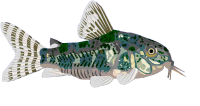Genetic defect?
-
cmstwc
- Posts: 86
- Joined: 15 Aug 2007, 08:13
- My cats species list: 1 (i:0, k:0)
- Location 1: San Francisco, USA
Genetic defect?
My trio (2F albino &1M cw26) breeds about every two weeks. Until today, I have 6-7 spawns. I feed my fries with microworm only for the first 2 weeks. I switch to crashed flakes after the first two weeks. Recently, I found out my fries from later spawn are having a common problem. Some fish rear body (tail) are having a "little twist". I would like to know is this twist a signal of genetic defection?
- kim m
- Posts: 610
- Joined: 13 Nov 2004, 00:07
- My cats species list: 49 (i:0, k:0)
- Location 1: Denmark
- Interests: Pike and Carpfishing, Aquariums (mainly corys)
Re: Genetic defect?
If the fry from the other spawns are ok, then I would rule out genetic defect, but look at other things. I would look at waterqulaity and such things. You say you have changed food for the fry. This might be worth an experiment too.
I always cull deformed fry. The only fry that comes out of my fishroom is the ones that are ok.
I always cull deformed fry. The only fry that comes out of my fishroom is the ones that are ok.
Best regards,
Kim M
-----------
Catfish Study Group
Guardians of Catfish
Skive Akvarieforening
Kim M
-----------
Catfish Study Group
Guardians of Catfish
Skive Akvarieforening
- Carp37
- Posts: 596
- Joined: 21 Sep 2007, 13:08
- My cats species list: 16 (i:7, k:0)
- My aquaria list: 7 (i:6)
- My BLogs: 2 (i:0, p:51)
- Location 2: Aughton UK
- Interests: fish, fishing, fossils, evolution/taxonomy, films
Re: Genetic defect?
I had a problem with some of my Brochis splendens fry last year, where after about 30-40 days several fry developed twisted spines or clamped, under-developed caudal fins. With my fish I suspect lack of food during development may have been the problem- I believe I grossly underestimated how much food they can eat during development.
Megalechis thoracata, Callichthys callichthys, Brochis splendens (and progeny), Corydoras sterbai, C. weitzmani, CW044 cf. pestai, CW021 cf. axelrodi, Pterygoplichthys gibbiceps, Ancistrus cf. cirrhosus (and progeny), Panaque maccus, Panaque nigrolineatus, Synodontis eupterus




